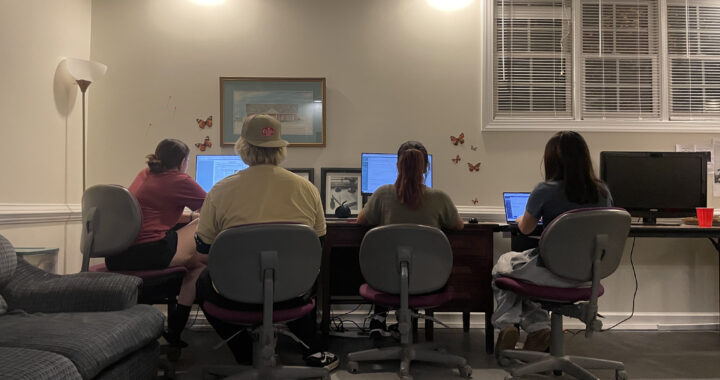New drug-detecting nail polish sparks criticism
3 min read
By LEAH VAHJEN
Four male college students in Raleigh, North Carolina and their budding brand, Undercover Colors, recently captured the attention of numerous media outlets with the unveiling of a nail polish with the capability to detect the presence of common date rape drugs such as Rohypnol, Xanax and GHB. The group is currently creating a line of products with the hope that their innovative nail polish and subsequent products will help “empower women to prevent sexual assault,” according to their self-written Facebook description.
Though the product is not yet slated to launch, Undercover Colors explained on their Facebook page that the polish works via chemical-contact interaction. When wearing the nail polish, users need only to stir a questionable beverage with their fingertip for assurance that their drink has not been tampered with. In the event that a drink is spiked with one of the applicable date rape drugs listed above, the nail polish will change color after the stir, alerting the user to the danger.
In opposition to the aforementioned ideology of the Undercover Colors brand, The Huffington Post’s Sophia Kerby says products like these “actually perpetuate rape culture by placing the burden of safety back onto women.” Further accrediting this ideology is Kate Russell from Rape Crisis England & Wales, whom Newsweek quoted as having said of the polish “Rape Crisis does not endorse or promote such a product or anything similar. This is for three reasons: it implies that it’s the woman’s fault and assumes responsibility on her behalf, and detracts from the real issues that arise from sexual violence.”
When influential women of the media and experts alike make claims like these, consumers are left with the impression that the founders of Undercover Colors are intending their products solely for the use of college-going womEn; a sentiment that they never expressed.
Meanwhile, the victims discussed in these anti-product articles are solely identified as women being raped by men, an issue that correlates with the only negative critique I have against the Undercover Colors brand in general: women can be the perpetrators and men can be the victims of rape, as well. In a 2014 article on Slate.com, Hanna Rosin points out that “a recent analysis of B[ureau] of J[ustice] S[tatistics] data, for example, turned up that 46 percent of male victims reported a female perpetrator,” and that when the definition of rape is made gender neutral, “the rates of nonconsensual sexual contact basically equalized, with 1.270 million women and 1.267 million men claiming to be victims of sexual violence.”
Countless women like Kerby and Russell are asserting that tools like rape whistles, pepper spray and drug-detecting nail polish allow society to more easily blame the victim, identified by them as female. While protecting women is an important and necessary measure to take, why not work to eradicate rape in all its ugly forms? In addition, there is a striking difference being overlooked by these critics between one’s personal right to finding comfort in precautions or protection and becoming worthy of blame as a victim of rape.












Nice job.
I think getting into the sexism of assuming rape victims are women distracts from your more important point, namely, that encouraging people to be proactive and protect themselves is being portrayed as “victim blaming.” Expecting agency from women and men is not victim blaming, and neither is giving them tools to protect themselves.
If a person walks down a dark alley in an economically depressed part of town while staring at their brand new smartphone and they get robbed, the person at fault is still the robber. However, it might be prudent for the victim to change some of their behaviors. This is not victim blaming, just common sense. The fear of “victim blaming” is not an excuse for failing to promote prudent action.
Be active, take agency, don’t become a victim in the first place. If an assault happens, take action, report it, get the evidence and get the perpetrator arrested.
Why do we keep sending the message that victims are powerless when that is exactly what rapists want them to believe?
Is that really all there is to it because that’d be flabbergasting.